Abstract
A model of the linear hydrogen bond has been devised which is characterized by three physical parameters of the isolated electron donor and proton donor molecules: μA-H, the bond dipole moment; ΔI, the difference in ionization potential between that of the electron donor and the corresponding noble gas atom; and l, the length of the electron donor lone-pair of electrons. The model is able to explain dimerization energy, charge transfer, internuclear separation, directionality, stretching force constants, dimer dipole moment, and infrared intensity enhancement.
Full text
PDF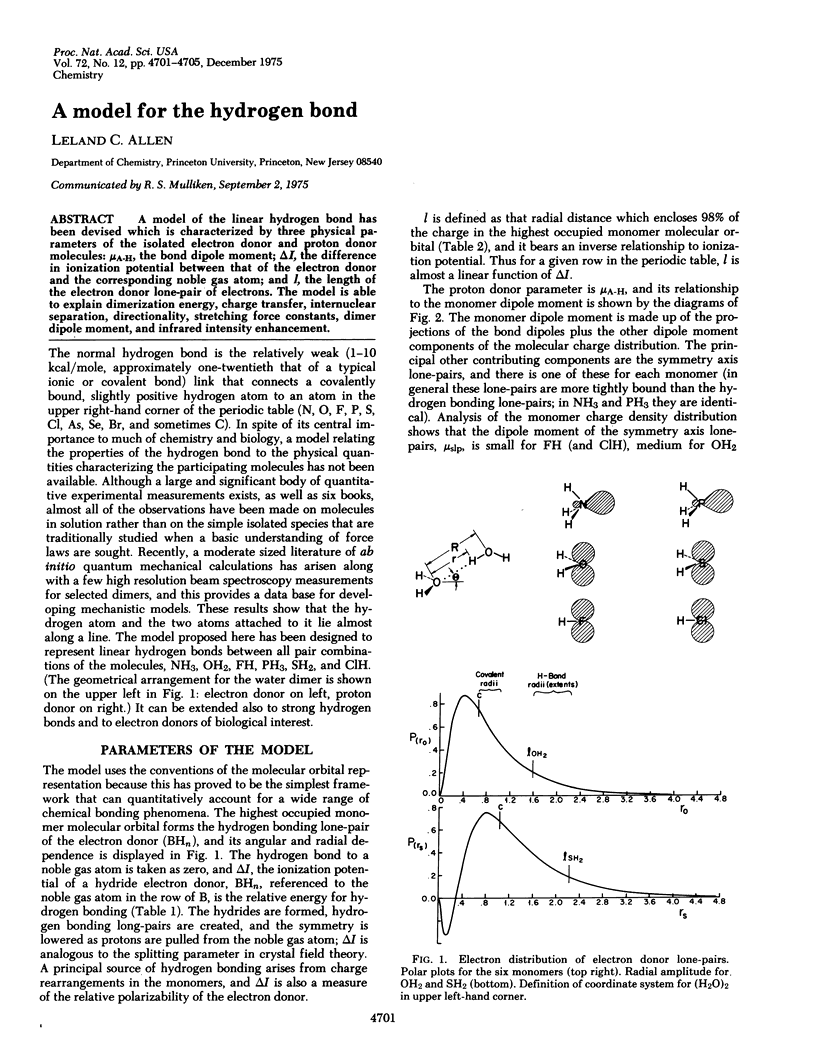
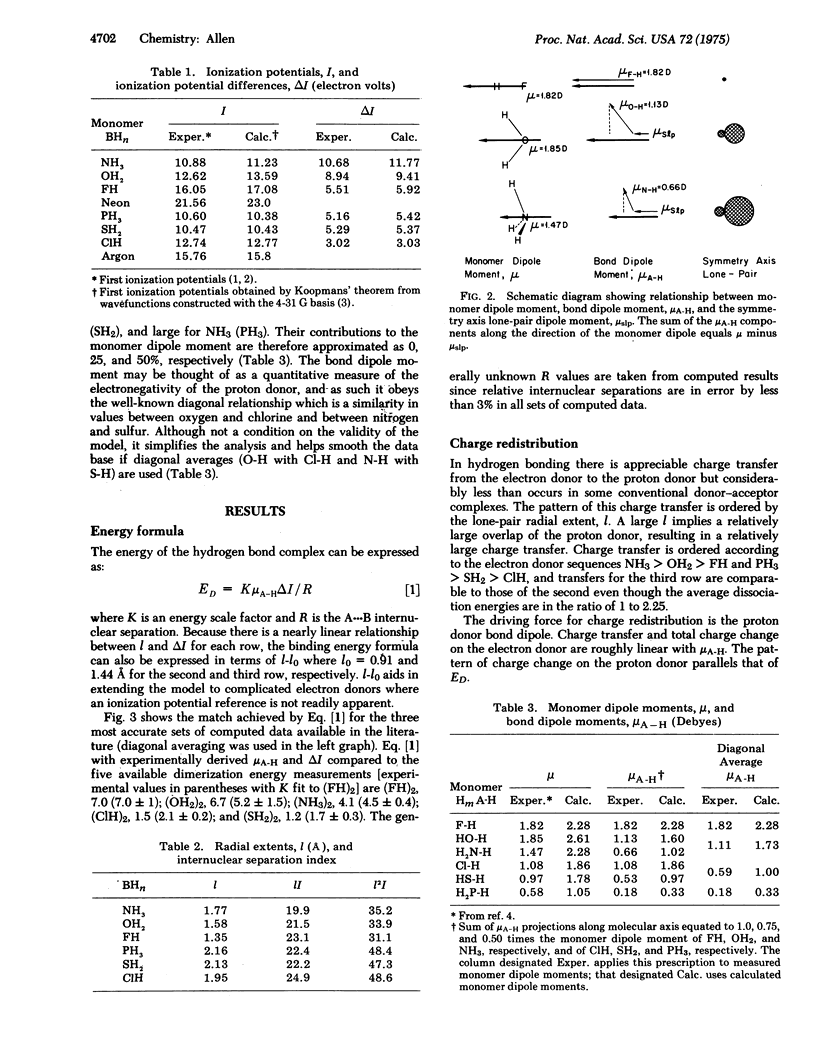
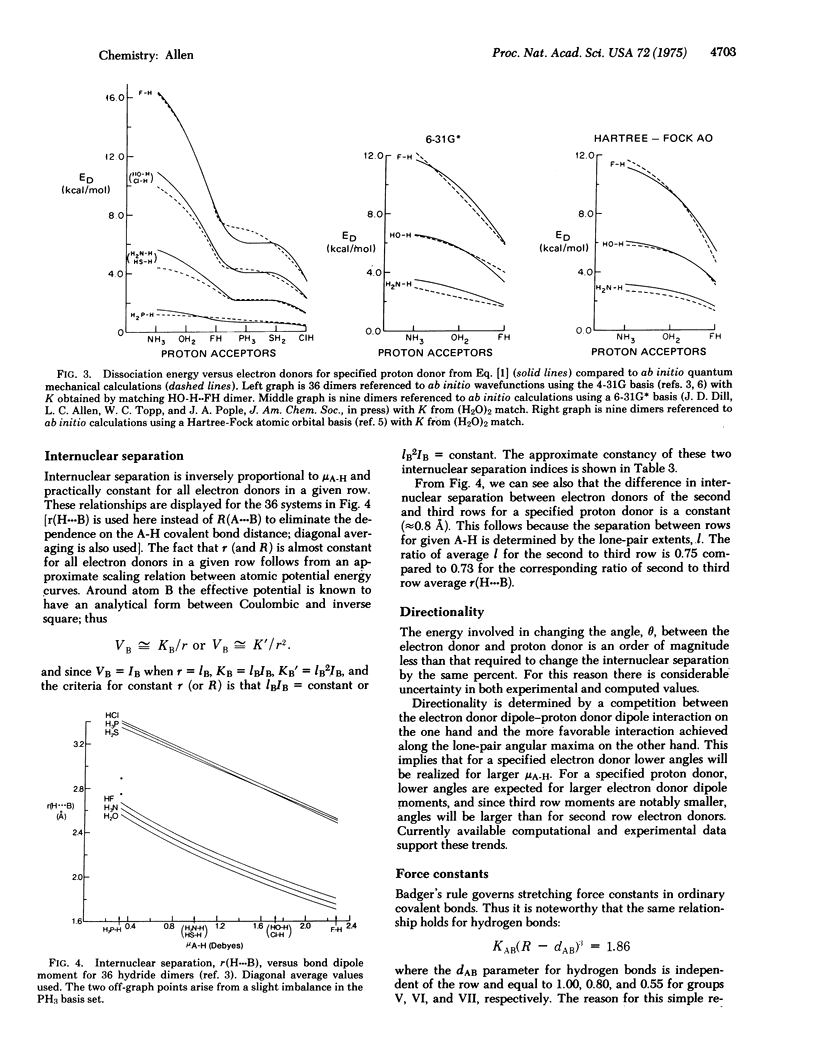
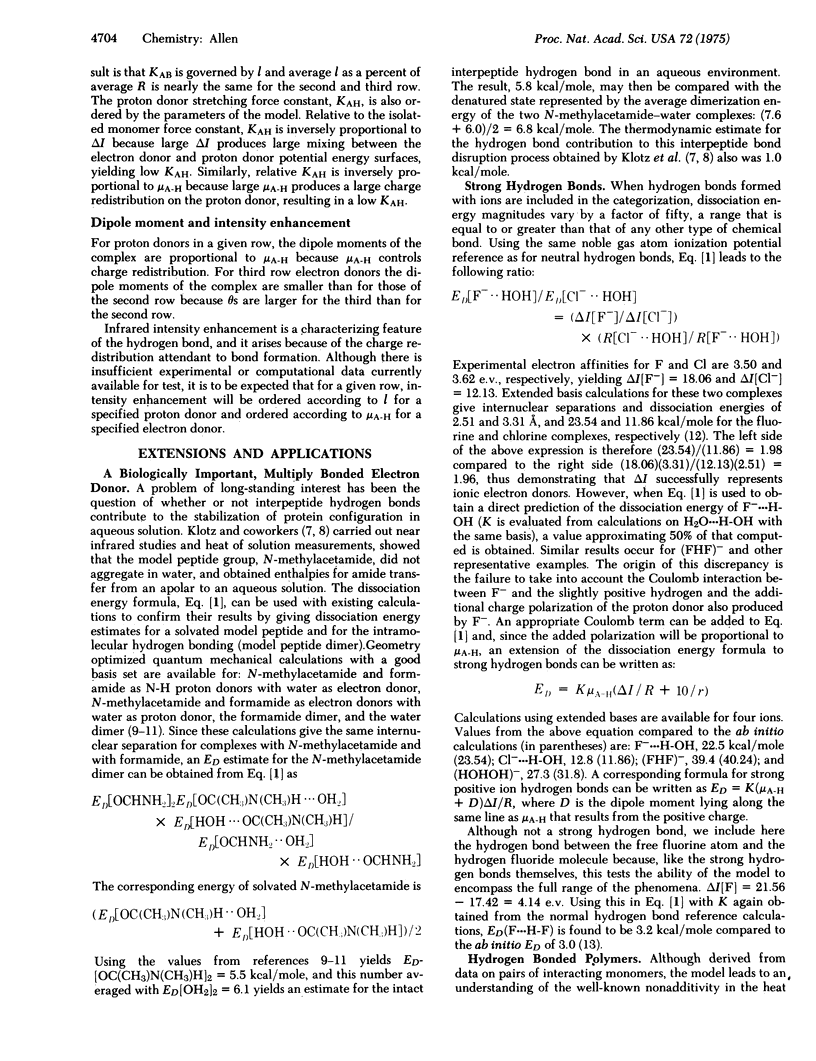
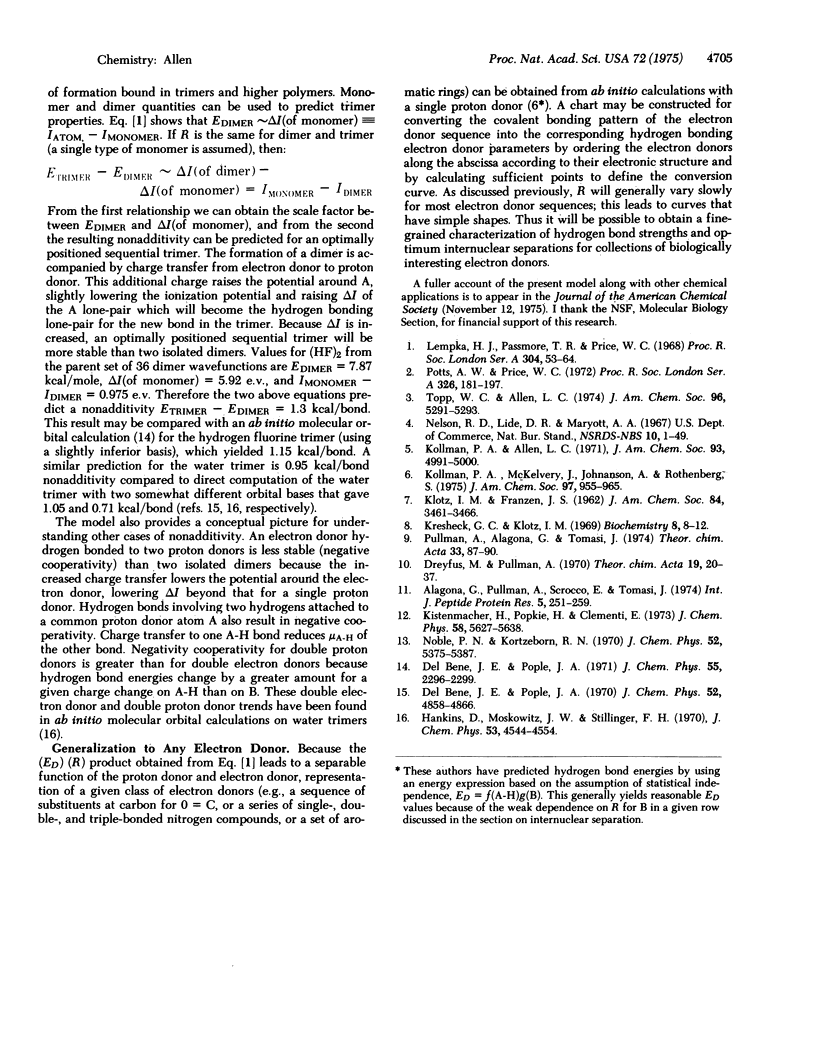
Selected References
These references are in PubMed. This may not be the complete list of references from this article.
- Alagona G., Pullman A., Scrocco E., Tomasi J. Quantum-mechanical studies of environmental effects on biomolecules. I. Hydration of formamide. Int J Pept Protein Res. 1973;5(4):251–259. doi: 10.1111/j.1399-3011.1973.tb03459.x. [DOI] [PubMed] [Google Scholar]
- Krescheck G. C., Klotz I. M. The thermodynamics of transfer of amides from an apolar to an aqueous solution. Biochemistry. 1969 Jan;8(1):8–12. doi: 10.1021/bi00829a002. [DOI] [PubMed] [Google Scholar]


